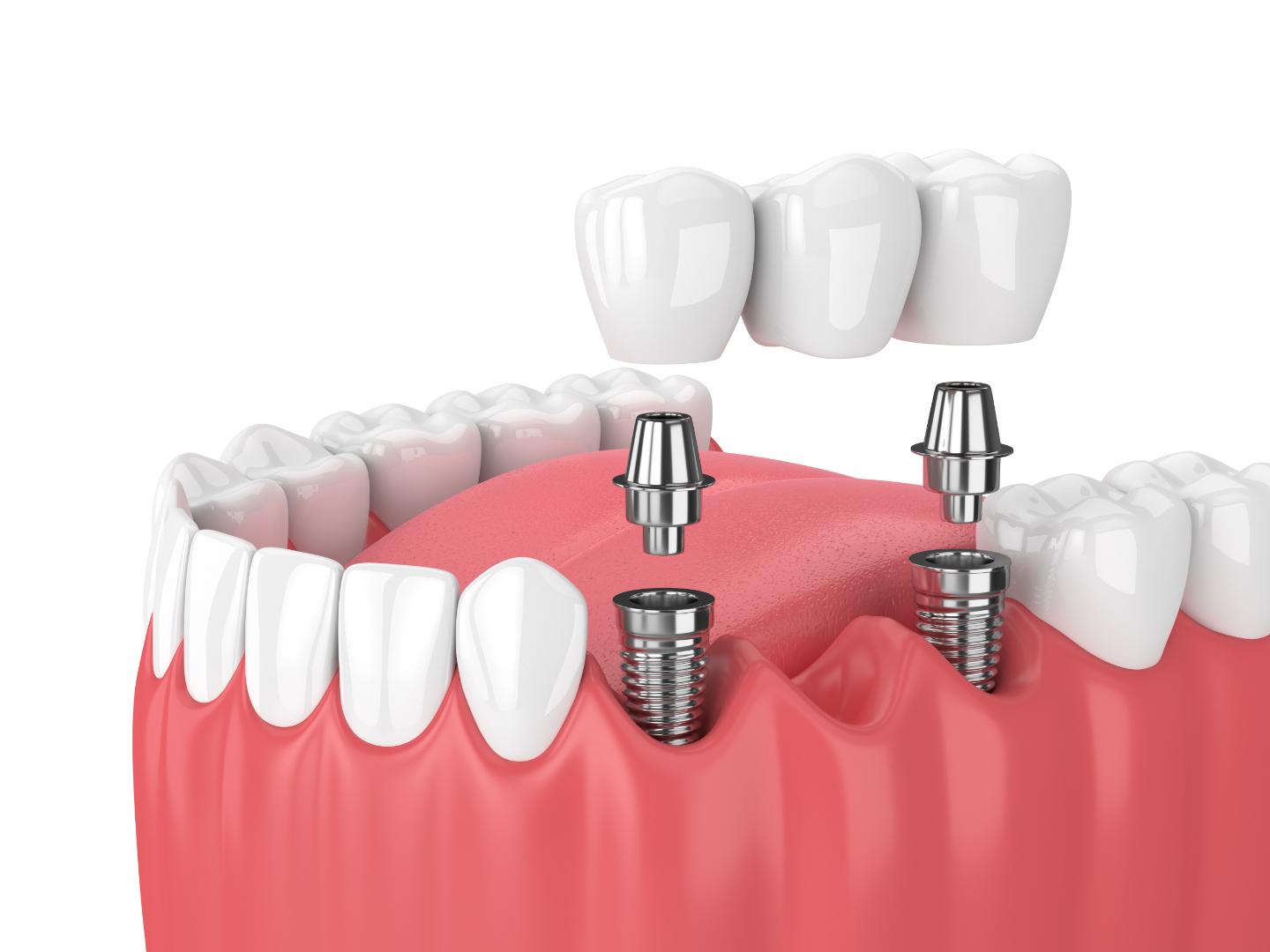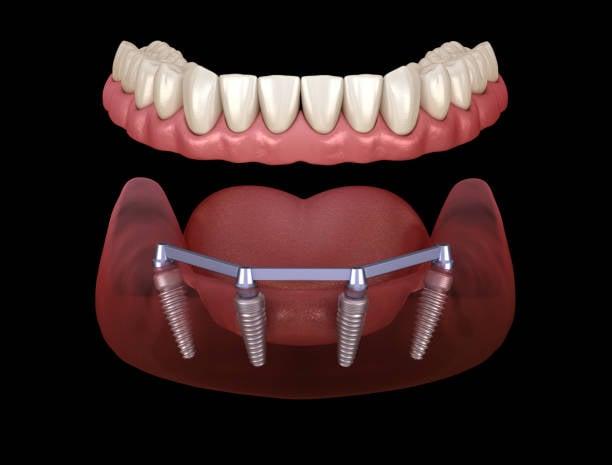In an age where information is just a click away, misconceptions can spread like wildfire, especially in the realm of dental health. Among these, dental implants stand out as a topic shrouded in myths and misunderstandings. From the belief that they’re only for the elderly to fears about pain and maintenance, these myths can deter individuals from making informed decisions about their oral health. In this article, we’ll sift through the noise to debunk the most common misconceptions surrounding dental implants, shedding light on their benefits, procedures, and long-term care.Join us as we clear the fog and reveal the truth behind this revolutionary dental solution, empowering you to make choices that create a healthier, brighter smile.
Understanding the longevity of Dental Implants and Their Durability
The lifespan of dental implants is often a topic of misunderstanding. Many people believe that dental implants are temporary solutions, but in reality, they are designed to be long-lasting and resilient. With proper care, dental implants can last more then 10 to 15 years, and in some cases, even a lifetime. This remarkable durability is often attributed to the biocompatible materials used, such as titanium, which integrates seamlessly with the jawbone in a process known as osseointegration.
In addition to material advancements, the success and longevity of dental implants also hinge on several vital factors, including:
- Oral Hygiene: Maintaining excellent dental hygiene is crucial.Regular brushing, flossing, and routine dental visits can definitely help prolong the life of your implants.
- Bone Health: Adequate bone density is essential for triumphant implants. Conditions affecting bone health, like osteoporosis, should be managed with your dentist.
- Lifestyle Choices: Habits such as smoking or heavy alcohol consumption can negatively impact the healing process and implant success.
When it comes to durability, dental implants outperform many other tooth replacement options, such as bridges and dentures. The following table highlights some key differences:
| Feature | Dental Implants | Bridges | Dentures |
|---|---|---|---|
| Longevity | 10-15+ years | 5-15 years | 5-10 years |
| Maintenance | Similar to natural teeth | Requires replacement if teeth shift | Regular adjustments needed |
| Comfort | High, feels natural | Moderate, can cause sensitivity | can be uncomfortable or slip |

Differences Between Dental Implants and Other Tooth Replacement Options
Dental implants provide a unique solution for tooth replacement that sets them apart from traditional options such as bridges and dentures. Unlike bridges, which rely on adjacent teeth for support, implants are anchored directly into the jawbone, offering enhanced stability and durability. This means that implants can function like natural teeth without placing additional stress on surrounding teeth.
In contrast to dentures, which can slip or become uncomfortable over time, dental implants are fixed in place. As they integrate with the jawbone, they help to preserve bone density and prevent the facial structure from changing, an issue often seen with long-term denture use. Additionally, while dentures may require frequent adjustments and replacements, implants typically offer a permanent solution, making them more cost-effective in the long run.
Here’s a fast comparison of dental implants and other common tooth replacement options:
| Feature | Dental Implants | Bridges | Dentures |
|---|---|---|---|
| Stability | High | Moderate | Low |
| Longevity | permanent | 5-15 years | 5-10 years |
| Bone Preservation | Yes | no | No |
| Maintenance | Regular dental check-ups | Replacement may be needed | Daily cleaning & adhesive use |
This table encapsulates the critical differences between dental implants and other replacement options, showcasing how dental implants not only mimic the function of natural teeth but also contribute positively to long-term oral health and aesthetics. Each option has its own merits, but for those seeking a reliable, low-maintenance option that closely resembles natural teeth, dental implants stand out as the superior choice.

Addressing the Fear of Pain and the Truth about Recovery Times
The fear of pain associated with dental implants is a common misconception that often deters individuals from seeking necessary dental care. In reality, advancements in dental technology and anesthesia have transformed the implant procedure into a largely comfortable experience. Most patients report feeling minimal discomfort, comparable to a routine dental filling. Local anesthesia, sedation options, and the skilled hand of a dentist work together to ensure that the process is as painless as possible.
Recovery times for dental implants can vary based on several factors, including the individual’s health, the complexity of the procedure, and adherence to aftercare instructions. while some may assume that healing takes an eternity,many patients find that they can return to most normal activities within a few days. it’s important to understand the typical phases of recovery, which often include:
- Initial healing: 1-2 weeks after surgery, where swelling and tenderness diminish.
- Osseointegration: 3-6 months, allowing the implant to securely bond with the jawbone.
- Final restoration: 1-2 months post-osseointegration for the placement of crowns.
while each patient’s experience is unique,the timeline for dental implant recovery is generally more favorable than many believe. Understanding what to expect can alleviate anxiety related to the procedure. Here’s a brief comparison of recovery phases to illustrate the progress most patients make:
| Recovery Phase | Duration | Description |
|---|---|---|
| Initial Recovery | 1-2 Weeks | Swelling subsides; mild discomfort. |
| Bone Healing | 3-6 months | Implant integrates with jawbone. |
| crown Placement | 1-2 Months | Final restoration placed; normal function resumed. |

Unraveling the Myths of Eligibility and Maintenance for Dental Implants
One prevalent myth surrounding dental implants is that only certain individuals qualify for the procedure. This misconception can stem from an assumption that age or perceived health conditions disqualify a person from being a candidate. In reality, most adults with healthy gums and enough bone to support the implant can qualify. Understanding factors such as overall health, bone density, and the presence of chronic dental conditions are crucial, and only a thorough evaluation by a dental professional can determine one’s suitability.
Another myth suggests that dental implants require significantly more maintenance than natural teeth. In actuality, while maintaining good oral hygiene is essential—such as regular brushing, flossing, and routine dental check-ups—dental implants themselves are often easier to care for compared to natural teeth. For instance, they are not subject to decay, which alleviates some of the stress related to traditional preventive care. The daily care routine for implants can include:
- Brushing twice daily
- Flossing daily
- Using an antimicrobial mouthwash
Moreover, many shy away from considering dental implants due to fears regarding their longevity and success rate. Contrary to this belief, studies have shown that dental implants boast a high success rate, often exceeding 95%, when properly placed and cared for. Factors affecting longevity include:
| Factor | impact on longevity |
|---|---|
| Oral Hygiene | Essential for preventing infection and implant failure |
| Regular Check-ups | Allow for early detection of issues |
| Healthy Lifestyle | Affects healing and overall oral health |
To Conclude
In the journey through the intertwined world of dental care and aesthetics, dental implants stand as a beacon of modern dentistry, offering solutions that empower individuals to smile with confidence. As we’ve explored the common myths surrounding these transformative tools, it becomes clear that separating fact from fiction is essential not just for informed decision-making, but also for dispelling fears that might potentially be unfounded.
Armed with the truth about dental implants, you now possess the knowledge to navigate discussions with your dental professional. Understanding the realities—whether it’s the pain involved, the longevity of results, or the surgical process—enables you to approach dental health with clarity and assurance.Remember, every smile tells a story, and with the right information, you can ensure yours is one of vitality and strength.
As you contemplate your options, keep this newfound knowledge close at hand. Whether you are considering dental implants for yourself or simply seeking to help a friend, carrying forth the facts can make a significant difference. After all, informed choices foster empowered lives, and the myths we debunk today pave the way for brighter tomorrows. Embrace your dental health journey, and may your smile shine brighter than ever!
